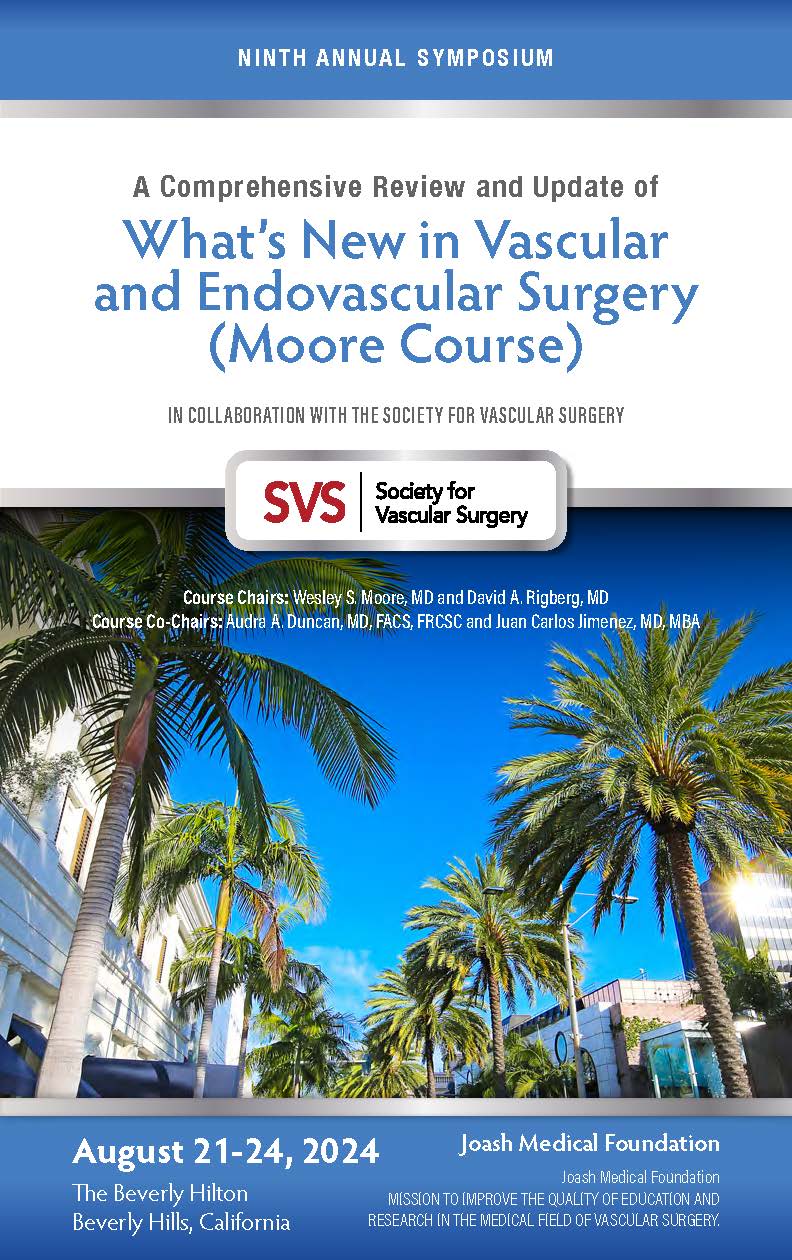News
 2024 UCLA SVS Vascular Course
2024 UCLA SVS Vascular Course
A Comprehensive Review and Update of What’s New in Vascular and Endovascular Surgery
Registration & Brochure PDFTextbooks
 Moore's Vascular and Endovascular Surgery: A Comprehensive Review 9th Edition
By Wesley Moore, MD
Using an easy-to-read, user-friendly format and hundreds of review questions that facilitate effective studying, Vascular and Endovascular Surgery: A Comprehensive Review, 9th Edition, contains the essential information you need for exam success and daily reference. Dr. Wesley Moore and a team of international experts cover everything from foundational concepts to the latest developments in the field, with each specialist providing a complete summary of a particular area of expertise. Extensive updates throughout the text keep you current with all that’s new in this rapidly expanding field.
Moore's Vascular and Endovascular Surgery: A Comprehensive Review 9th Edition
By Wesley Moore, MD
Using an easy-to-read, user-friendly format and hundreds of review questions that facilitate effective studying, Vascular and Endovascular Surgery: A Comprehensive Review, 9th Edition, contains the essential information you need for exam success and daily reference. Dr. Wesley Moore and a team of international experts cover everything from foundational concepts to the latest developments in the field, with each specialist providing a complete summary of a particular area of expertise. Extensive updates throughout the text keep you current with all that’s new in this rapidly expanding field.Video

Carotid Angioplasty/Stenting
CAROTID STENT/ANGIOPLASTY
Carotid angioplasty involves dilating the narrowed channel through atherosclerotic plaque by expanding a balloon at the end of a catheter and then holding the artery open with a metallic frame called a stent. Stent/angioplasty is a technique that is widely employed in other blood vessels such as the coronary arteries of the heart, the arteries to the kidneys, and the arteries supplying blood to the legs. The possibility of employing this technique to the carotid arteries has been undergoing evaluation for the past fifteen years. The technique involves the introduction of a balloon catheter delivery system through an artery in the groin, under local anesthesia, and advancing it to the carotid artery under fluoroscopic control. Once a guide wire has crossed the narrowing in the plaque, an anti-embolism protection device is advanced beyond the plaque as a means of catching debris that is released from the plaque during its dilatation with the balloon catheter which also carries the stent. The artery is then dilated leaving a stent in place to hold the channel open.
Carotid angioplasty(CAS) has been compared to carotid endarterectomy(CEA) in several prospective randomized clinical trials; one in France(EVA-3S), one in the German speaking countries(SPACE), one international trial(ICSS), and one in the United States(CREST). In general all trials have shown that the current risk of stroke following CAS is twice as high as the risk following CEA. This was also true in the CREST trial but it was also shown that the risk of myocardial infarction was higher following CEA than was the case following CAS. However, from the patients perspective, the greatest adverse effect on quality of life occurred with stroke and not myocardial infarction. Therefore, for the patient who is at average risk for surgery, CEA is still preferred over CAS. In time, there will probably be improvements in the safety of CAS. Also, the risk of myocardial infarction following CEA will be reduced due to better pre-operative medical management.